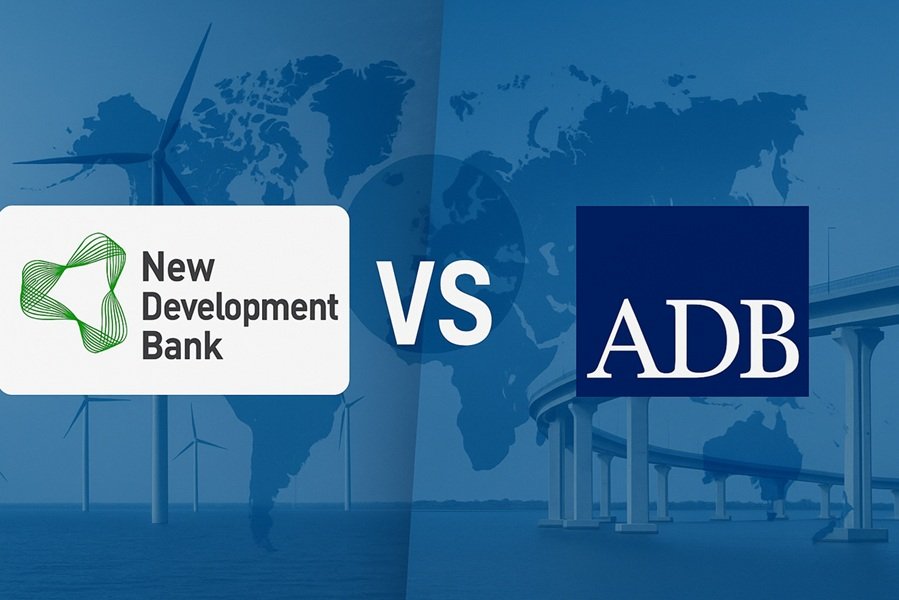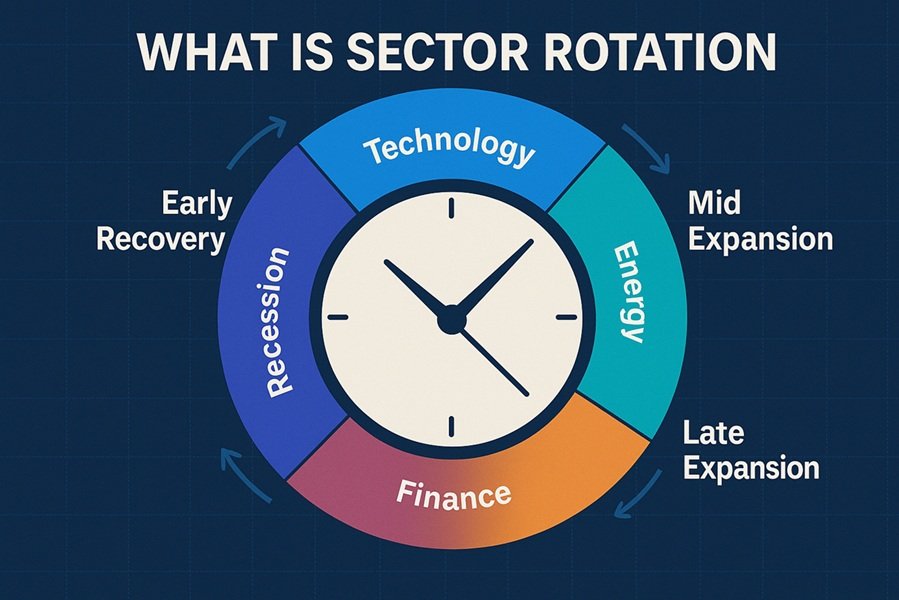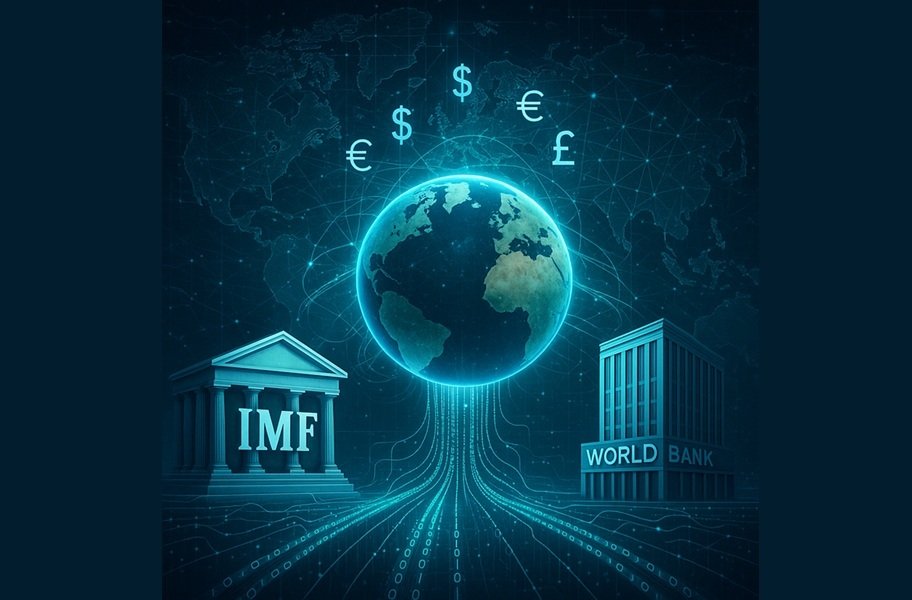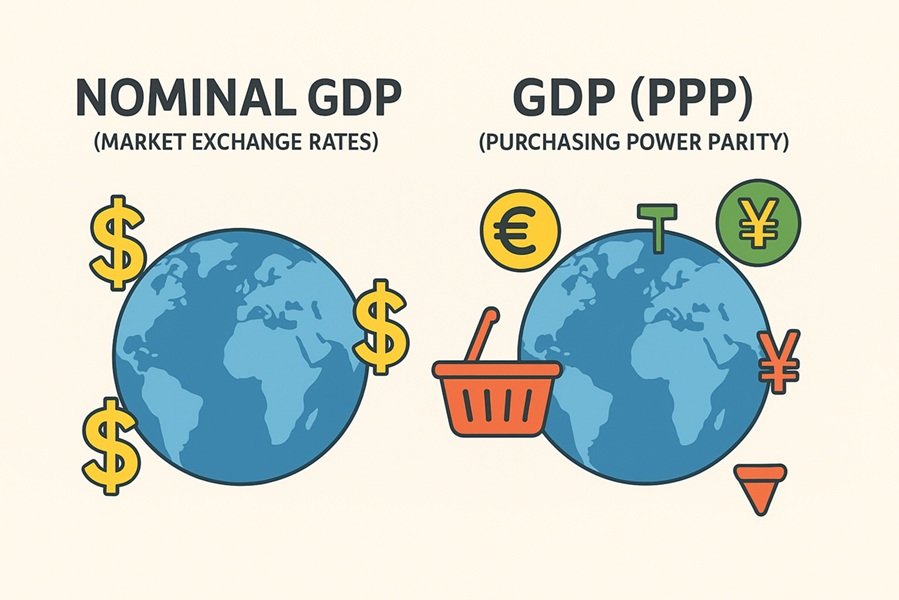
Introduction
In the rapidly evolving global economic landscape, development banks play a crucial role in financing infrastructure, reducing poverty, and promoting sustainable growth. Among the most prominent are the New Development Bank (NDB) — established by the BRICS nations — and the Asian Development Bank (ADB), a long-standing regional financial institution led by Asia-Pacific countries.
While both aim to promote development and regional cooperation, their origins, membership structures, priorities, and operational strategies differ significantly. Let’s explore how these two institutions compare and complement each other in shaping the economic destiny of emerging markets.
1. Historical Background
1.1 The Asian Development Bank (ADB)
The Asian Development Bank (ADB) was founded in 1966, with headquarters in Manila, Philippines. It was created in the aftermath of post-war reconstruction and early globalization to promote economic and social development across Asia and the Pacific.
- Initial Members: 31 countries (now over 68 members)
- Major Contributors: Japan and the United States remain the largest shareholders and hold substantial voting power.
- Motto: “Fighting poverty in Asia and the Pacific.”
The ADB primarily focuses on reducing poverty, improving connectivity, financing sustainable infrastructure, and promoting inclusive growth in developing Asian economies.
1.2 The New Development Bank (NDB)
The New Development Bank (NDB), on the other hand, was established much later in 2014 by the BRICS nations — Brazil, Russia, India, China, and South Africa. It was officially launched at the 6th BRICS Summit in Fortaleza, Brazil, as part of a broader effort by emerging economies to create an alternative to Western-dominated financial institutions like the IMF and the World Bank.
- Headquarters: Shanghai, China
- Authorized Capital: USD 100 billion
- Motto: “Building a sustainable future.”
- Founding Objective: To mobilize resources for infrastructure and sustainable development projects in BRICS and other emerging economies.
The NDB represents a South-South cooperation model, emphasizing equality, mutual benefit, and shared growth rather than conditional aid or political influence.
2. Governance and Membership
| Aspect | ADB | NDB |
|---|---|---|
| Year Founded | 1966 | 2014 |
| Headquarters | Manila, Philippines | Shanghai, China |
| Membership | 68 members (both regional & non-regional) | 9 members (BRICS + new entrants like Bangladesh, UAE, Egypt, Uruguay) |
| Major Shareholders | Japan & USA | Equal shares among BRICS (initially) |
| Voting Power | Weighted by capital contribution | Equal voting rights for founding members |
| Leadership Rotation | Traditionally led by a Japanese President | Rotates among BRICS members |
The governance model of the NDB is designed to avoid domination by any single member — each founding member holds equal voting rights, symbolizing balance and inclusivity.
In contrast, ADB’s voting power is heavily influenced by Japan and the United States, reflecting the geopolitical influence of developed economies in Asia’s post-war development trajectory.
3. Funding Sources and Financial Capacity
ADB
- Relies on member country contributions, capital markets borrowings, and repaid loans.
- Maintains a AAA credit rating, allowing it to borrow at very low interest rates.
- Provides loans, grants, technical assistance, and equity investments.
- As of recent years, ADB’s total loan portfolio exceeds USD 300 billion.
NDB
- Authorized capital of USD 100 billion, with USD 50 billion subscribed capital from BRICS countries.
- Raises funds through green bonds and other financial instruments in local currencies to reduce exchange rate risks.
- Focuses on sustainable and infrastructure projects, particularly in renewable energy, transportation, and water management.
- Also maintains a high credit rating (AA+), enhancing its credibility in global financial markets.
4. Strategic Objectives
| Focus Area | Asian Development Bank (ADB) | New Development Bank (NDB) |
|---|---|---|
| Primary Goal | Poverty reduction and economic development in Asia-Pacific | Infrastructure and sustainable development in emerging economies |
| Approach | Financial aid with policy reforms and governance improvements | Infrastructure financing without political conditions |
| Key Themes | Climate change, gender equality, rural development, digital economy | Renewable energy, sustainable transport, clean water, smart cities |
| Regional Focus | Asia-Pacific | BRICS nations and developing countries globally |
The ADB has a broader developmental approach encompassing social, environmental, and institutional reforms, while the NDB focuses primarily on practical, large-scale infrastructure and sustainability projects with minimal policy conditionalities.
5. Project Portfolios and Impact
5.1 ADB Projects
- Financed major infrastructure such as Asian Highway Network, rural electrification in India, and climate resilience in Pacific islands.
- Supports education, healthcare, and governance reforms.
- Invested heavily in regional connectivity projects like South Asia Subregional Economic Cooperation (SASEC).
5.2 NDB Projects
- Funded over 100+ projects worth USD 35 billion+ across member countries.
- Notable projects include:
- Renewable energy projects in India (solar and wind)
- Water supply and sanitation in Brazil
- Transport infrastructure in Russia
- Sustainable urban development in South Africa
- Distinctive feature: Loans are often issued in local currencies to promote financial sovereignty and reduce forex risks.
6. Key Differences in Philosophy
- Institutional Orientation:
- ADB aligns more closely with traditional Western-led financial institutions (World Bank, IMF).
- NDB promotes a multipolar world order emphasizing emerging economies’ autonomy.
- Conditionality:
- ADB loans often come with policy reform conditions (e.g., governance or market liberalization).
- NDB emphasizes non-interference — loans are project-based, not policy-based.
- Focus on Equality:
- NDB operates on an equal-shareholding model among BRICS members.
- ADB has weighted voting, reflecting member economic strength.
- Currency Use:
- ADB primarily lends in USD or JPY.
- NDB increasingly promotes local currency financing (INR, CNY, RUB, etc.).
7. Challenges and Criticisms
ADB Challenges
- Perceived dominance of developed nations (Japan and USA).
- Bureaucratic procedures slow project implementation.
- Limited focus on Africa or Latin America.
NDB Challenges
- Comparatively smaller capital base and project experience.
- Need to expand membership for greater influence.
- Some delays in project execution due to governance and rating constraints.
8. Cooperation and Complementarity
Despite competition, both banks have complementary roles:
- ADB provides technical expertise, capacity-building, and regional integration frameworks.
- NDB provides innovative, flexible, and rapid financing for sustainable projects.
In fact, there is growing scope for co-financing initiatives — combining ADB’s experience with NDB’s new-age, sustainability-oriented model.
9. Future Outlook
The global shift toward multipolar development finance is transforming how infrastructure and sustainability are funded.
- NDB aims to expand membership to include more developing nations across Africa, Asia, and Latin America.
- ADB is rebranding its mission to align with climate action, digitalization, and inclusive growth.
Together, these institutions will shape a new era of development financing — blending traditional multilateralism with emerging market innovation.
Conclusion
While the Asian Development Bank (ADB) represents the legacy of post-war development and the traditional financial order, the New Development Bank (NDB) embodies the aspirations of the 21st century — equality, sustainability, and South-South cooperation.
Both play indispensable roles:
- The ADB brings decades of expertise and deep institutional networks.
- The NDB brings fresh energy, equality-driven governance, and innovative financing models.
As global development challenges intensify — from climate change to digital divides — collaboration, rather than competition, between the ADB and NDB will be essential to build a more inclusive, balanced, and sustainable world economy.







